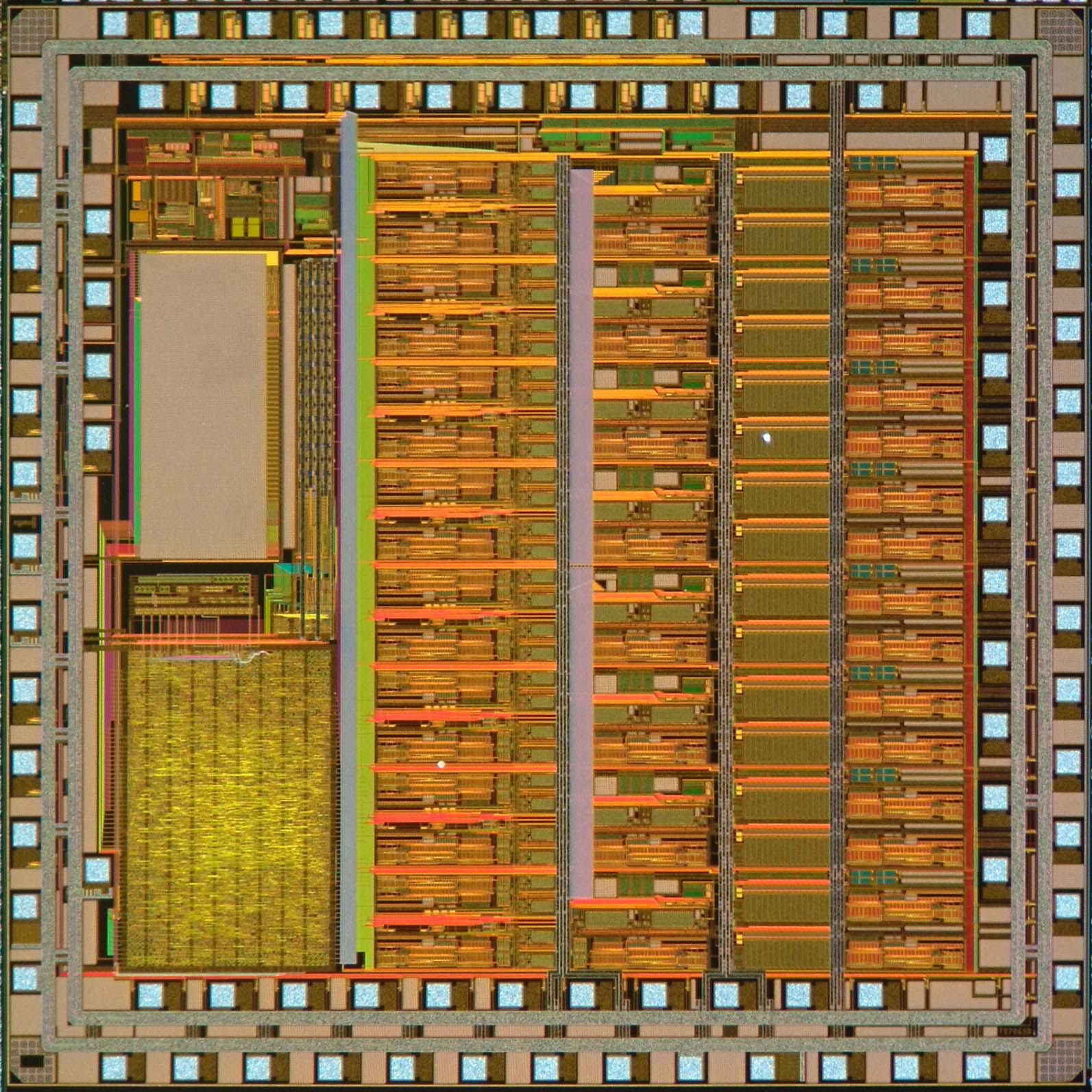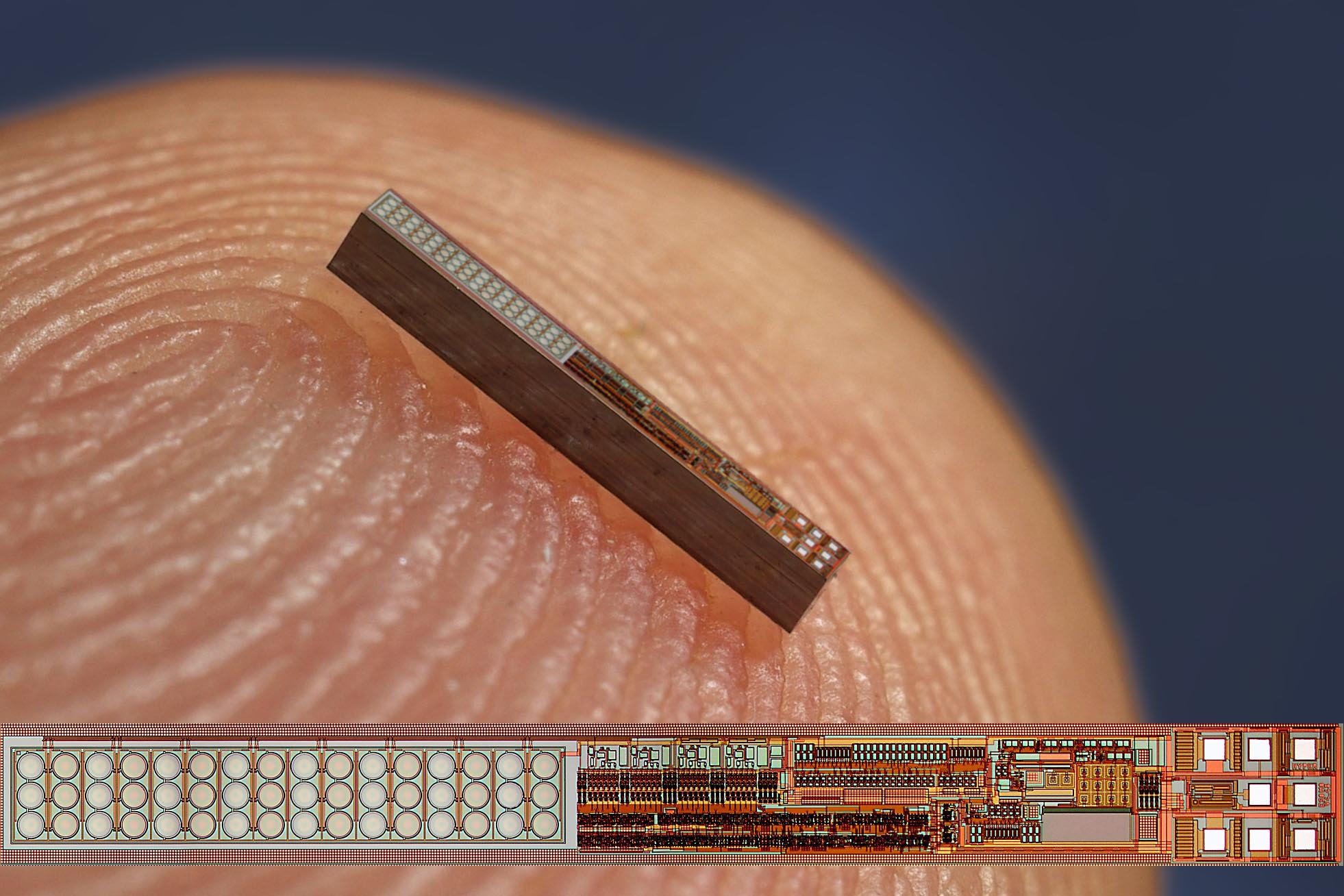Today, environmental parameters are recorded using complex systems that contain not only the actual sensor, but also a large number of other electronic components for further processing of the sensor signal. At Fraunhofer IMS, we are working on such integrated sensor systems with the aim of accommodating as many functions as possible close to the sensor in an integrated circuit. Due to the series production of microelectronics, integrated sensor systems can be designed at low cost and miniaturized for a variety of applications. Depending on the type of application, such systems comprise different functional groups ranging from simple signal amplification and the conversion of sensor signals into digital form up to neural networks for the recognition of features and patterns. Our development activities in the field of integrated sensor systems cover the following main areas:
Integrated Sensor Systems
Sensor Frontends
Sensors often deliver very small, frequently non-linear electrical signals, which are also available in different forms as current, voltage or even as a change in resistance. The processing of the signals for usability at higher application levels is the task of the so-called "analog front-end" (AFE) circuits. Often, the small signals have to be amplified, and ideally the amplification factor is programmable. In some cases, sensor signals are also subject to a high offset, which must be compensated by the AFE to ensure an optimum dynamic range. Some sensors, e.g. resistance bridges, also require an electrical signal (current) that must be fed in to obtain a sensor signal (voltage). This is also the task of the AFE. In addition, more complicated methods such as autozero or chopper amplifiers are also used, for example to reduce low-frequency noise.
Increasingly, sensor data is being processed digitally in integrated sensor systems. Analog/digital converters are used as the interface between the analog and digital signal forms, and different methods are used depending on the requirements. For sensor signal processing, converters based on the SAR method (successive approximation) or sigma-delta converters have proved particularly useful.
Detailed information about the performance range for analog front ends can be found here.
Mixed Signal Design
Modern integrated sensor systems signal processing usually consist of analog and digital components. There are a large number of interactions between these circuit parts. For example, many analog components are digitally programmed to set gain factors, to enable or disable certain functions, or to perform calibration operations. The necessary processes are controlled by the digital part. The connection to the outside world is established via standard interfaces (SPI, RS485). Because of the closely interlocked development of analog and digital components, the term "mixed-signal design" was established. What exactly is hidden behind this and which functions we realize here, you can find out here.
System-on-chip design
We speak of system-on-chip solutions when all tasks of a functionally delimited electronic system are realized on a single silicon chip, e.g. sensor and/or sensor readout circuitry, analog functions, computing power in the form of a microcontroller, memory and local clock generators. Advantages of SoC for integrated sensor systems are the small footprint, as well as the low power consumption compared to systems made of single components.
In System-on-Chip design, we at Fraunhofer IMS offer developments of both FPGA-based and customer-specific ASIC solutions. Among others, embedded microcontrollers such as the RISC-V implementation (RV32IMC) developed at Fraunhofer IMS are used. Specific instruction set extensions for the RISC-V have been created for the efficient solution of special tasks (e.g. artificial intelligence). Hardware accelerators allow the implementation of AI algorithms or encryption methods. More information can be found here.
Integrated sensors
Some environmental parameters can be measured by sensors which can be realized directly on a silicon chip. This opens up the possibility of extremely small and efficient integrated sensor systems that can be used in places where this previously seemed unthinkable. This has opened up completely new possibilities in medical diagnostics, for example. Here, on the one hand, physical effects of the silicon itself are exploited, such as temperature dependence or piezoelectric interactions, but on the other hand, integrated sensors can also be created by micromechanical processing or by applying additional layers to the silicon substrate. The many possibilities this opens up range from micromechanical acceleration sensors to bioactive layers that can detect pathogens, for example. For more information on the "Integrated Sensors" service offering, click here.
Neural networks
The increasing use of sensors provides a wealth of data ready for processing at higher application levels. Often it is not even necessary to transfer all raw data from sensor systems to the system level, but to recognize certain features in them. Neural networks are increasingly used to recognize or evaluate such features already in the raw data and to forward only significant information. In this way, a considerable reduction in the amount of data to be transmitted can be achieved.
At Fraunhofer IMS, we are researching neural networks that can be implemented highly efficiently on simple hardware platforms. The goal is to develop even more efficient sensor systems that already include a high level of signal interpretation.
Further information on the topic of neural networks can be found here.


